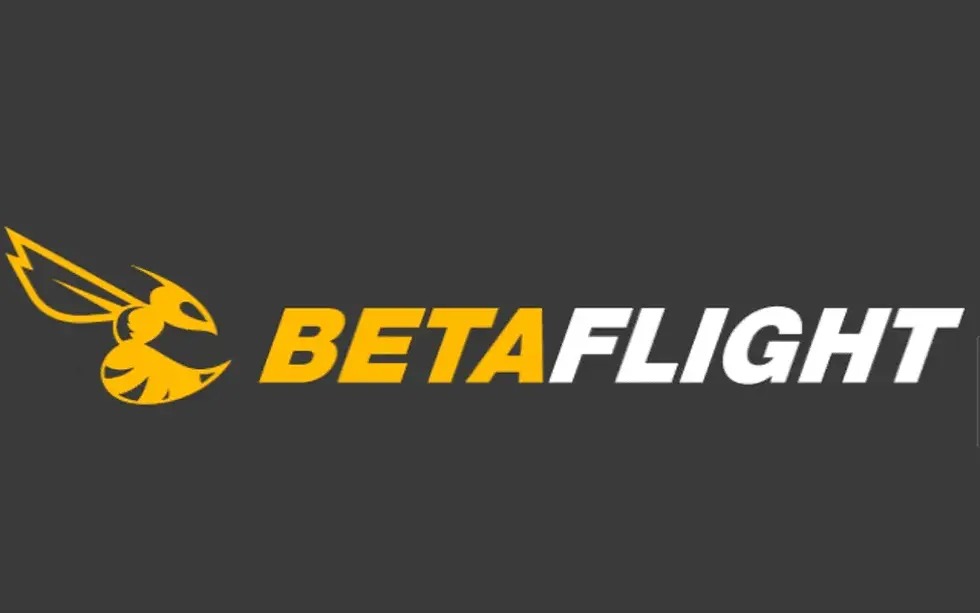Quick Start to New Betaflight 4.4 Features
- Justin Davis

- Jan 31, 2023
- 7 min read
Updated: Feb 2, 2023
Betaflight 4.4 Release and Improvements

1. Cloud Builds
The Cloud Build system is designed to offer convenience and keep the STM32F411 and STM32F722 (512kb flash targets) alive for years to come. The system allows users to select the features they want, and a custom firmware will be generated for them. Any issues with the cloud build process can be addressed in the #cloud-build-issues Discord channel. To help diagnose issues, users can use the Support button in the Command Line Interface (CLI) tab in Configurator 10.9.0 (RC4 onwards) to provide valuable information.
If something is missing from the cloud build that was expected, this is likely due to an outdated board configuration that has not been updated by the community or the manufacturer. In such cases, the users can flash the core version, which will load the hardware drivers (but not all features), and then they can submit a Support level of detail from the CLI tab.
For users missing a barometer, they can try any or all of the listed options (BARO_MS5611, BARO_SPI_MS5611, etc.) in the custom defines input box. Similarly, for users missing the flash chip, they can try any or all of the listed options (FLASH_W25P16, FLASH_W25Q128FV, etc.) in the custom defines input box. The authors request patience and assistance from users in working through the diverse hardware information and crowd-sourcing it.
2. HD OSD
HD OSD is a new feature that is supported by the Betaflight 4.4 OSD system. This new feature adds a number of new capabilities and improvements to the on-screen display of HD goggles and VTX systems. The HD OSD feature is now available in the latest build of Betaflight 4.4 and is a major step for HD FPV systems.
To enable HD support, select the VTX (MSP + Displayport) option on the ports tab for the UART to which the VTX is connected. The MSP option will automatically be selected, and the first time the HD goggles and VTX system is powered on, the flight controller will detect it and automatically apply the necessary settings, save them, and reboot automatically. This new feature may not be supported by all HD systems yet, so if the OSD tab does not automatically switch to HD, users can enter the required commands manually.
The size of the canvas in the HD OSD is larger than in previous versions, with 53x20 columns and rows being the default size. The VTX is able to adjust this by sending an MSP command to change the canvas size. The boot logo, armed message, stats, CMS menu, and other OSD elements are automatically centered, even if the canvas size is reduced.
In addition to the standard OSD elements, HD OSD also offers new and improved elements, such as the ability to enable and reposition the following items: goggle battery voltage, VTX voltage, bit-rate, delay, distance, video link quality, goggle DVR icon, VTX DVR icon, VTX warnings, VTX temperature, and goggle fan speed.
To make better use of the color capabilities of HD systems, four different fonts are now supported in HD OSD. These fonts are intended to be used to display text and other icons in white, green, amber, and red, corresponding to normal, good, marginal, and critical conditions, respectively. This will allow the link quality text and icon to be displayed in red when critical, amber when marginal, and green when good, for example.
Users can enable and customize the font display by setting the displayport_msp_fonts array. To enable all four fonts, set the displayport_msp_fonts array to 0,1,2,3. To only use the default font, set the displayport_msp_fonts array to 0,0,0,0. To display critical warnings in red, set the displayport_msp_fonts array to 0,0,0,3.
The HD OSD feature is a huge addition for HD FPV systems and was developed by @SteveCEvans. With this new feature, users can expect a more robust and functional on-screen display for their HD goggles and VTX systems. Thank God!
3. Preset Favorites! - Yay no more scrolling!
NEW Presets Feature That Streamlines Your Search Process
Are you tired of scrolling through countless presets to find the one you need for your drone configuration? The search process can be time-consuming and frustrating, especially when you have a specific preset in mind. But now, with the introduction of the Preset Favourites feature, you can save time and streamline your search process.
The Preset Favourites feature is designed to reduce the amount of searching you need to do in the presets tab. The configurator will remember the presets you are using and automatically mark them with a "star". This way, your favorite presets will always appear first in the initial list and in the search results, making it easier for you to find the preset you need.
In addition, the configurator now has a fix that preselects the current firmware from the plugged-in FC. This means that you can avoid searching for commonly used presets, and pick them right away. This combination of features makes it possible for you to quickly and easily find the presets you need, without having to go through a lengthy search process.
The "stars" in the UI are clickable, which means that you can manually add or remove favorite presets. This gives you complete control over your presets and allows you to keep your favorite presets organized and easily accessible.
Overall, the Preset Favorites feature is a valuable addition to the configurator that streamlines the search process for presets. It saves time, reduces frustration, and provides a more efficient and user-friendly experience for drone enthusiasts and professionals alike. Whether you're a seasoned drone pilot or a beginner, the Preset Favourites feature is sure to make your life easier.
4. Gps Return to Home and Enhancements
1 GPS "Rescue" has been updated and improved with better reliability in returning to the home point, descending at an angle, landing within a few meters of the home point, and disarming automatically on touch-down.
The system has separate PID control elements for altitude and return velocity to home with default settings that work well for typical quads.
Setting up GPS Rescue requires testing with a switch at close range and low altitude, as well as following the instructions in the wiki entry.
The system has a failsafe phase where the quad will always enter the Failsafe Stage 1 phase for 1 second (user-configurable) before initiating the Rescue. Stage 1 behavior should not be set to DROP, or it will disarm and drop in Stage 1 and never enter GPS Rescue.
The safest option for Stage 1 is to configure Angle Mode on an aux switch and set Stage 1 Failsafe to enable Angle Mode with a fixed hover/light climb throttle value and all other sticks forced to center.
The compass/magnetometer should be disabled unless it has been fully calibrated and confirmed to be noise-free.
Baro data is preferred over GPS data for altitude control in short flights and can be adjusted based on the user's preference. GPS data should be trusted more in long flights or with some particular Baro units or installations.
There are three new GPS Rescue Debug modes that show accuracy in tracking altitude and velocity and used for tuning the GPS Rescue PIDs. Mag information is recorded if Mag is enabled.
Data acquisition from GPS hardware uses the UBlox protocol at 10Hz by default, and NMEA mode has been improved.
Sanity checks have been extensively changed and the quad will attempt to land itself if necessary using only the Baro signal.
11 It's important to check that the Home Arrow points directly back towards home after takeoff to prevent the GPS Rescue from flying in the wrong direction in case of a failsafe. If you don’t have a proper working home arrow. Land and restart the drone and allow 1-2 minutes to properly get a working home arrow. Re-test!
Read the following Wiki for more information on the new GPS features in Betaflight 4.4
Betaflight GPS Wiki : https://betaflight.com/docs/wiki/archive/GPS-Rescue-v4-4
5. Other OSD Improvements
The OSD now has the option to display "READY" with a mode switch. This is intended for racing situations where all pilots' video feeds are displayed on one central screen. The pilot can indicate that they are ready to fly by switching the mode, causing "READY" to appear on their OSD. The race director can then check if all pilots are ready by looking at the central screen.
The OSD now correctly handles Craft and Pilot names. The user can configure the OSD to show either Craft or Pilot name, or both.
The OSD now displays PID profile and Rate profile names.
6. Support Extended Shot Telemetry
If the ESC supports it, we now can get per-motor temp, current and voltage via DSHot Telemetry. For more info see PR11694 - thanks @damosvil
7. Flight Improvements
The new Antigravity feature in 4.4 has been optimized for improved stability during rapid throttle changes. The application of AntiGravity P boost has been removed from yaw to prevent additional yaw wobbles and the overall AntiGravity P boost has been reduced to minimize P wobbles. The relative P gain during AntiGravity can be set independently of the I boost with anti_gravity_p_Gain, with a default value of 100 (meaning normal). The timing of the boost effect has been optimized with a PT2 filter at 6Hz by default, which can be adjusted by changing the anti_gravity_cutoff value. The AntiGravity value is directly related to the amount of iTerm boost, with the default value being 80 (meaning 8x iTerm boost on fast throttle cuts). The old step mode has been removed as it was not working as intended.
The iTermWindup feature is now active by default, with a value of 85. Whenever the motorMix percentage exceeds the iterm_windup limit of 85%, iTerm growth will be reduced. The iTerm inhibition will apply to all axes, including yaw. The default value is suitable for most quads, but heavy or low authority quads with iTerm windup problems may benefit from a lower iterm_windup value. iTermWindup complements iTermRelax and is especially useful for preventing iTerm windup in low authority quads where the machine is not able to meet the target rate for some time after the sticks have stopped moving.
The mixer behavior when airmode is active with extreme stick inputs has been improved, with a smoother onset of airmode throttle boost and better behavior overall. The edge cases that resulted in different outcomes depending on the mixer type have been addressed.
8. ELRS 3.x Support for SPI boards
ELRS 2.x transmitters will not be able to bind to ELRS SPI Boards flashed with Betaflight 4.x.
Other Changes
Four PID profiles (was 6), and 4 rate profiles (was 3) - thanks @haslinghuis
TPA settings inside the PID profile - thanks @haslinghuis
improved barometer smoothing and calibration, attitude calculation fixes, filter fixes - thanks @karatebrot
HD OSD support - thanks @SteveCEvans
VTX device over MSP PR11705 - thanks @phobos
parse and log GPS degree of precision (DOP) values PR11912 - thanks @karatebrot
hardware support for newer gyro chips, improved filtering for BMI160/270, etc - thanks @SteveCEvans and others
lower minimum of 20Hz for dynamic notch, useful for low RPM setups with very large props
increased dynamic idle minimum RPM from 100 (10k RPM) to 200 (20k rpm) for quads with very small props
support for 64 discrete LEDs via cloud build option - PR12064 - thanks @Limonspb
Fixes to NMEA at 10hz and UBlox comms - thanks @Karatebrot, @krzysztofkuczek
Winbond W25q80 flash support - thanks @David-OConnor
many bugfixes, target updates, driver updates and fixes - thanks to too many people to mention individually

If you need more help please join our Discord Group here : https://discord.gg/j9jVjvA
Article by Justin Davis of Drone Camps RC on Youtube. ® Rights Reserved 2023.


Comments